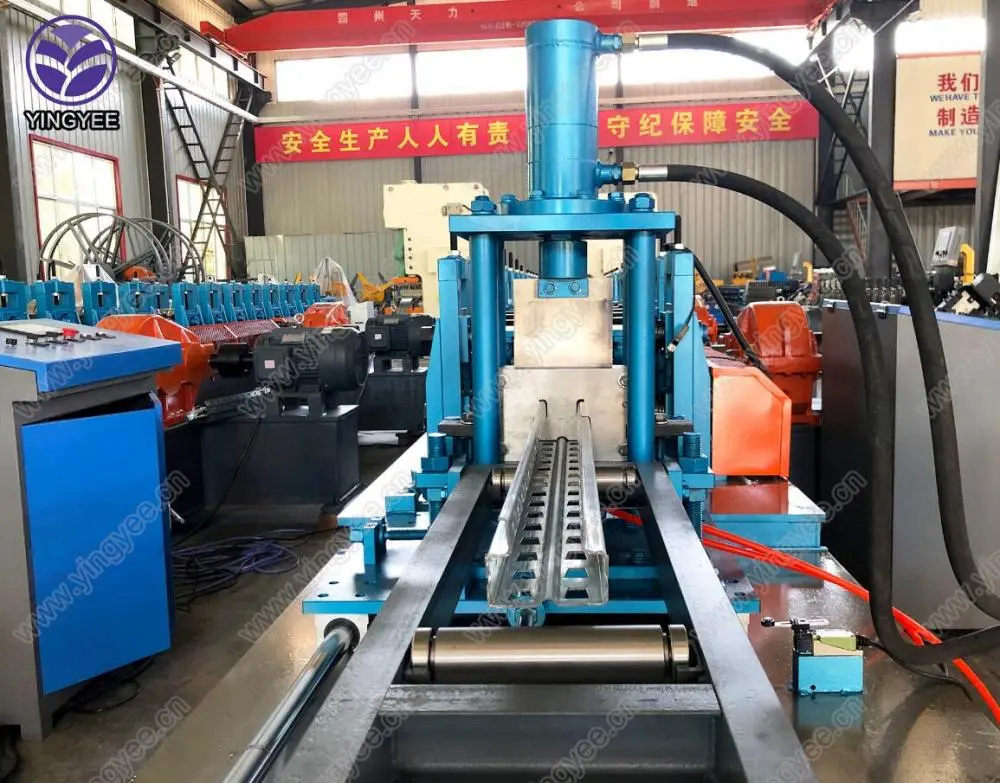
The U-Shape Baffle Ceiling Machine Revolutionizing Industrial Design
In the world of manufacturing and industrial design, the quest for efficiency, aesthetics, and functionality is an ongoing journey. One of the remarkable innovations that have gained significant traction in recent years is the U-shape baffle ceiling machine. This sophisticated piece of equipment not only optimizes production but also enhances the overall appeal and acoustic performance of spaces.
Understanding U-Shape Baffle Ceilings
Before delving into the intricacies of the U-shape baffle ceiling machine, it is essential to understand what a U-shape baffle ceiling is. These ceilings consist of elongated panels that hang in a U-shaped configuration, providing distinctive design elements while helping to control sound. They are commonly used in commercial spaces, such as auditoriums, restaurants, and offices, where acoustic treatment is critical.
U-shaped baffles are designed to reduce noise levels and improve sound quality by dissipating noise and echo. Their unique shape allows them to be spaced strategically, creating an aesthetically appealing visual while serving functional purposes. The combination of innovation in design and the need for sound management makes the production of U-shape baffle ceilings a focal point for manufacturers, facilitating the development of specialized machines.
The Technology Behind the Machine
The U-shape baffle ceiling machine is engineered for precision and speed. It utilizes advanced technology to cut, shape, and assemble the baffle panels with remarkable efficiency. Typically, the machine consists of several key components automated cutting tools, bending stations, and assembly mechanisms. These features allow for high-volume production while maintaining consistent quality.
1. Automated Cutting The first step in manufacturing U-shape baffles is cutting the raw material, often made of wood, metal, or acoustically-treated composites. The machine employs CNC (Computer Numerical Control) technology to execute precise cuts, ensuring that each panel is uniform in size and shape.
2. Bending Stations Once the panels are cut, they must be bent into the U shape. The machine features hydraulic or mechanical bending technologies that enable the material to be molded without compromising its structural integrity. This process is crucial for achieving the desired acoustic and visual properties.

3. Assembly Mechanisms After the panels are shaped, they are assembled into the final product. The machine automates the joining process, using techniques such as welding or adhesive bonding. This automation reduces labor costs and increases production speed.
Advantages of Using a U-Shape Baffle Ceiling Machine
The introduction of a U-shape baffle ceiling machine brings several advantages to manufacturers and end-users alike
- Increased Production Efficiency Automating the production process allows manufacturers to produce large quantities of baffle panels in a shorter time, meeting the demands of large projects without sacrificing quality.
- Enhanced Precision The use of CNC technology ensures that every panel is cut and shaped with precision, resulting in a well-fitted and aesthetically pleasing installation.
- Cost Savings By streamlining the manufacturing process, companies can reduce labor costs and waste materials, ultimately lowering the overall production cost.
- Improved Acoustic Performance The quality of construction directly impacts the acoustic performance of the baffles. High precision means better acoustic treatment for end-users, leading to quieter and more enjoyable environments.
Conclusion
The U-shape baffle ceiling machine epitomizes innovation in the manufacturing landscape. By combining advanced technology with practical applications, it not only meets the growing demands for aesthetically pleasing and acoustically effective ceilings but also enhances production processes. As more industries recognize the importance of sound management in design, the U-shape baffle ceiling machine will undoubtedly play a crucial role in shaping the future of commercial and industrial spaces.